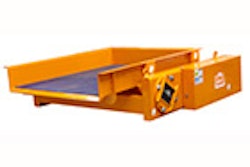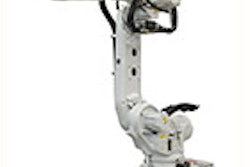When a large manufacturer calculated how much they could save by consolidating operations, they didn’t count the true cost of closing a location a few states away that had a 90-year history and hundreds of skilled employees. The oldest, most expert employees took early retirement. The mid-level employees, the company’s intellectual backbone, took their expertise to a competitor, rather than uproot their families. The manufacturer faced a loss that defied the best accountants’ ability to calculate.
 Peter Drucker popularized the phrase “knowledge economy” back in 1969, referring to a new generation of high tech “knowledge workers.” The truth is manufacturing pioneered the knowledge economy decades earlier and has always been highly dependent on knowledge workers. Knowing how to profitably make things that satisfy market demand better than the competition is the lifeblood of industry. That knowledge asset is locked in the minds of knowledge workers — and they are walking out with that knowledge capital at an increasingly rapid rate.
Peter Drucker popularized the phrase “knowledge economy” back in 1969, referring to a new generation of high tech “knowledge workers.” The truth is manufacturing pioneered the knowledge economy decades earlier and has always been highly dependent on knowledge workers. Knowing how to profitably make things that satisfy market demand better than the competition is the lifeblood of industry. That knowledge asset is locked in the minds of knowledge workers — and they are walking out with that knowledge capital at an increasingly rapid rate.
Part of the problem is demographic. Baby boomer experts are retiring in record numbers. The Bureau of Labor Statistics counts over a third of workers over the age of 50. As recently as 2003, only 13 percent of the work force was older than 55. The government’s National Science Foundation reports 64 percent of workers in the science and engineering field are over 40. The clock is ticking on keeping decades of corporate knowledge accessible and usable.
 Mergers, acquisitions and restructurings put additional pressure on the knowledge asset. Moving jobs across the country and across the ocean is easy, but moving workers and their expertise is problematic. It’s easier for people to move to a new company than to a new city. Losing their knowledge is bad enough — losing it to a competitor is extremely damaging.
Mergers, acquisitions and restructurings put additional pressure on the knowledge asset. Moving jobs across the country and across the ocean is easy, but moving workers and their expertise is problematic. It’s easier for people to move to a new company than to a new city. Losing their knowledge is bad enough — losing it to a competitor is extremely damaging.
Manufacturers face a very real existential challenge as they wrestle to gather, preserve and use their corporate knowledge asset. Knowledge is not just critical to today’s profit; it fuels the innovation that drives future prosperity. It is no wonder manufacturers are spending billions on knowledge management. The results, unfortunately, are not matching the effort.
Too many knowledge management programs in the past have failed because of a mix of a faulty approach and the quirks of human nature. Large manufacturers in the U.S. and Europe are rethinking the model for managing knowledge from the ground up — with measurable success. These new systems are being built around these key ideas:
- Active and agile knowledge. The old knowledge library paradigm is too static. Knowledge is active, alive and has greatest value when used. It must be accessible, useful and relevant. Engineers don’t have time to stop what they are doing to dig for a manual — assuming they know where to look in the first place. Knowledge must push to workers in context.
- Accessible, complete and current knowledge. Knowledge is stored in a variety of disconnected documents that quickly fall out of date. An engineer may not have time to search for specification documents, best practices presentations and various spreadsheets of data. And if he grabs old parameters without realizing they are outdate, he may invest hours in a solution that is totally out of specification. Systems must make it easy for users to access a complete and current knowledge.
- Make knowledge capture part of the process. If people don’t have time to go search through documents, they surely don’t have time to create them. Efforts can vary in quality, depending on who creates them. Capturing knowledge, evaluating it, refining it and updating it has to be an organic part of the workflow — or it simply will not happen.
- Structured flexibility. Knowledge takes many forms and is used in many ways. An engineer might need materials specifications, dimension measurements, picture maps, work instructions and interdependency schedules to design a part. The system must be flexible and able to completely capture and structure that content for access and reuse.
- Reward knowledge contributions. Some people fear sharing their knowledge will make it easier to ship their job to China. Others take genuine pride in being the go-to person when someone has a question. A well-managed knowledge system uses such cultural issues to motivate, recognize and reward people for contributing. They create a virtuous circle of engagement, trust and use, with practical rewards that encourage more engagement and more use.
The demographic pressure on corporate knowledge shines a spotlight on the need to capture and reuse knowledge — both to preserve this invaluable corporate asset and realize its value. Manufacturers, the original drivers of the knowledge economy, need systems that unlock and amplify the knowledge potential, bypassing the problems of an aging, mobile and dispersed workforce, to unleash new innovation.
Author Jeff Moffa is Vice President for Knowledge Systems and leads the research and product development teams behind the Auros Knowledge Platform. Jeff has always been intrigued by the possibilities of knowledge aware engineering and knowledge aware process management. He began his career at Ford Advance Manufacturing where he developed his appreciation for knowledge management and his theories for capturing and using expert know-how.
Lisa Merriam is a New York City-based business writer whose work has appeared in Forbes, American Bank Marketing, Apparel Magazine, China Business News, Sporting Goods Business and others. She is author of Merriam’s Guide to Naming and contributed to several New York Times best sellers.






















